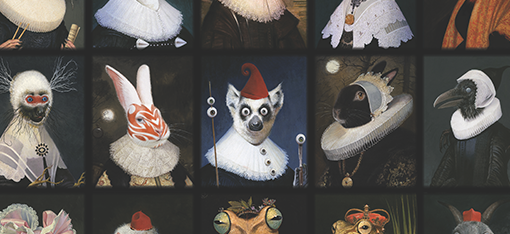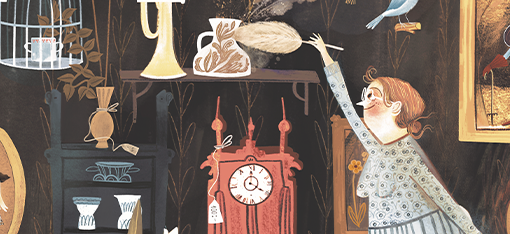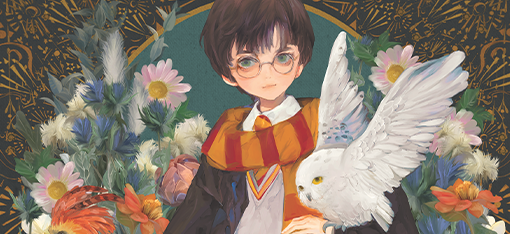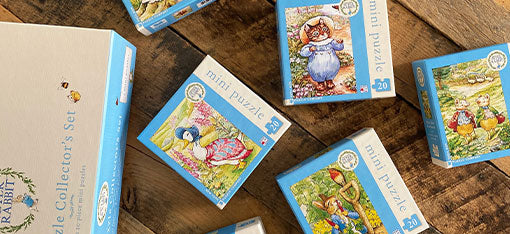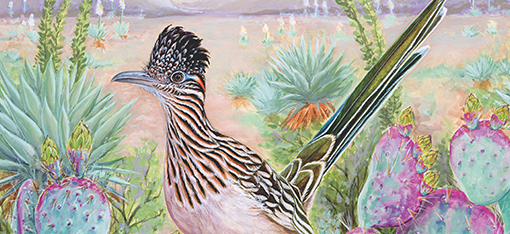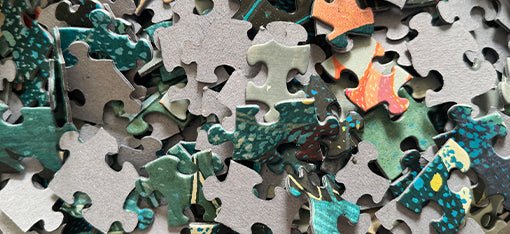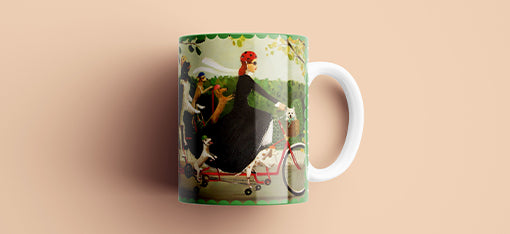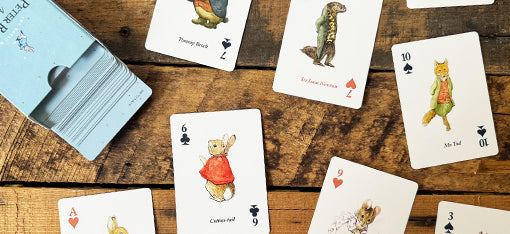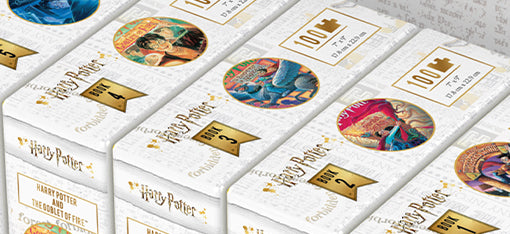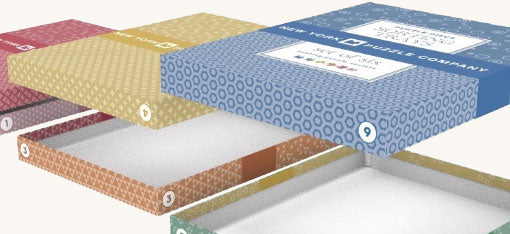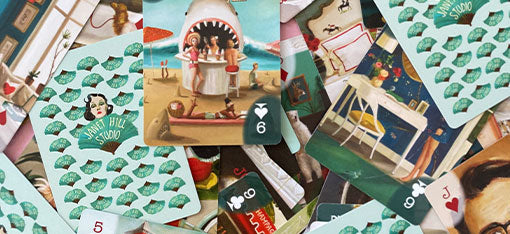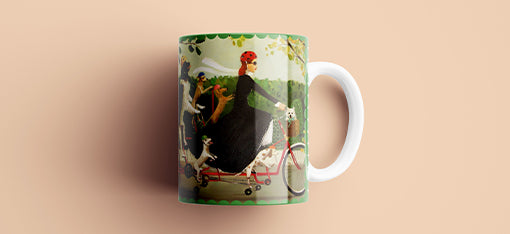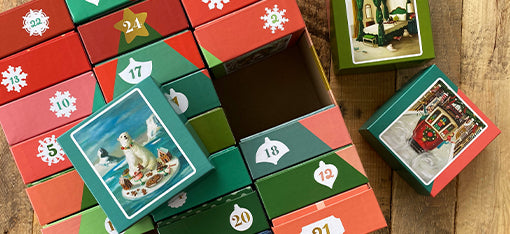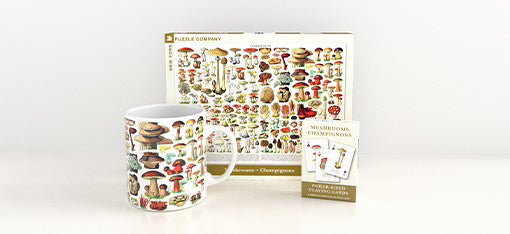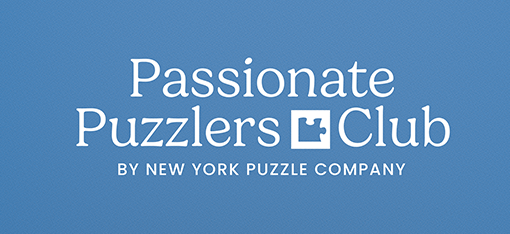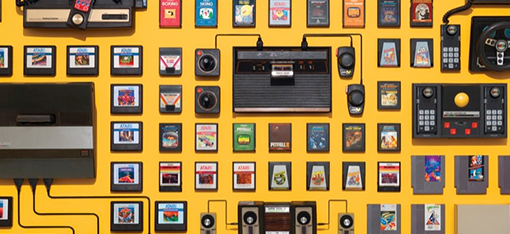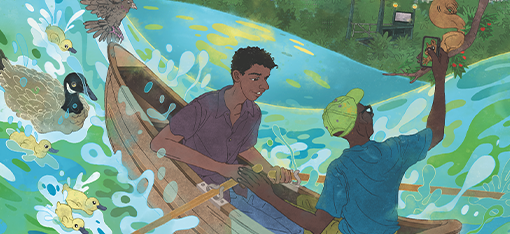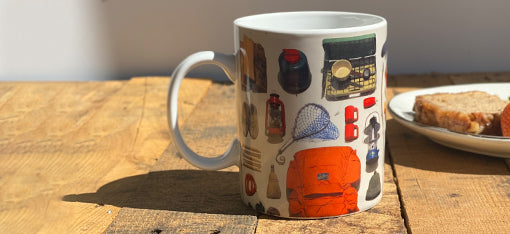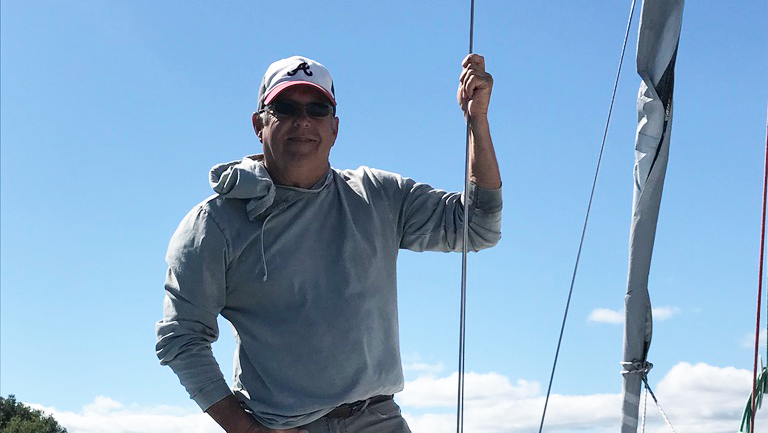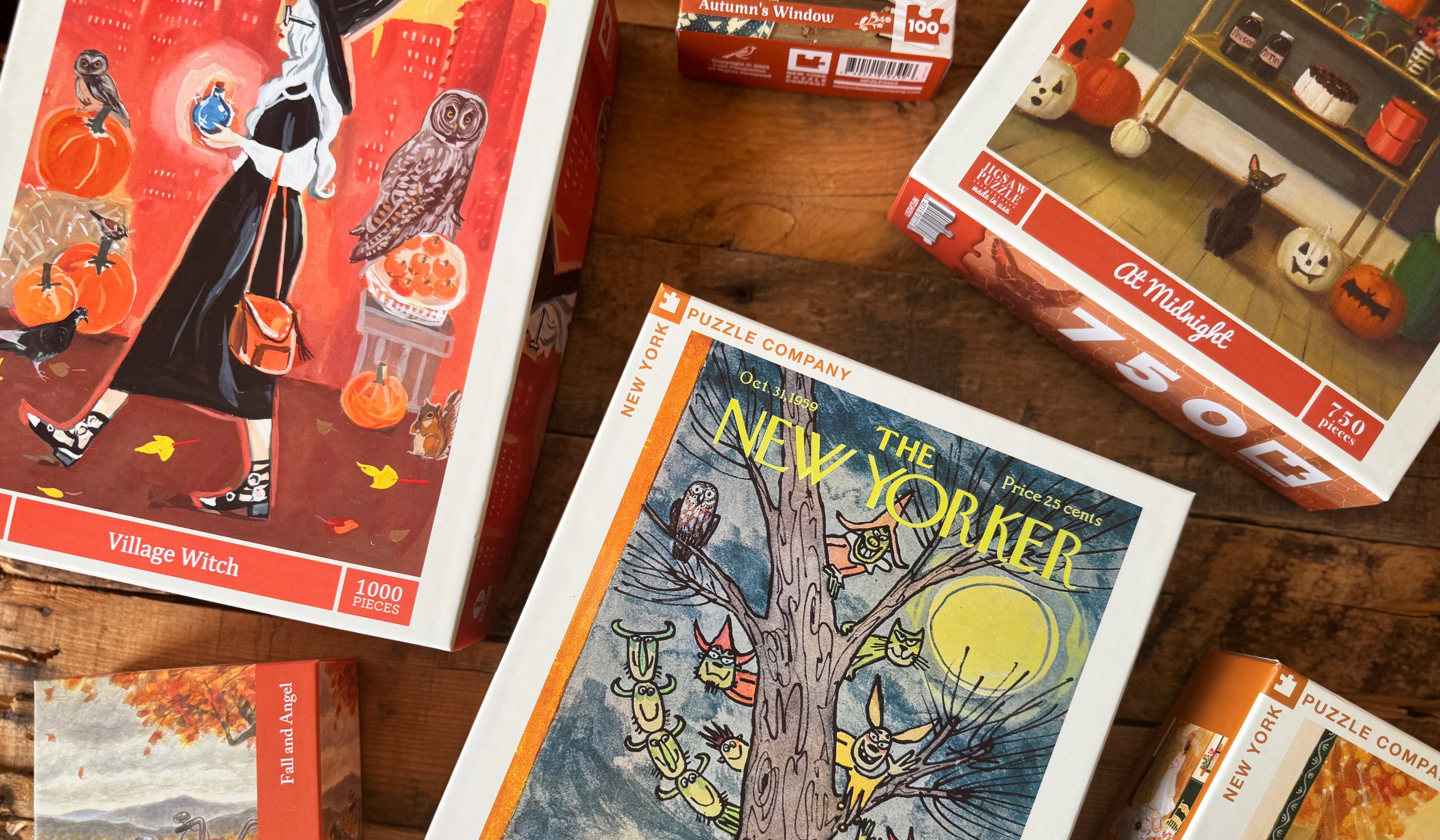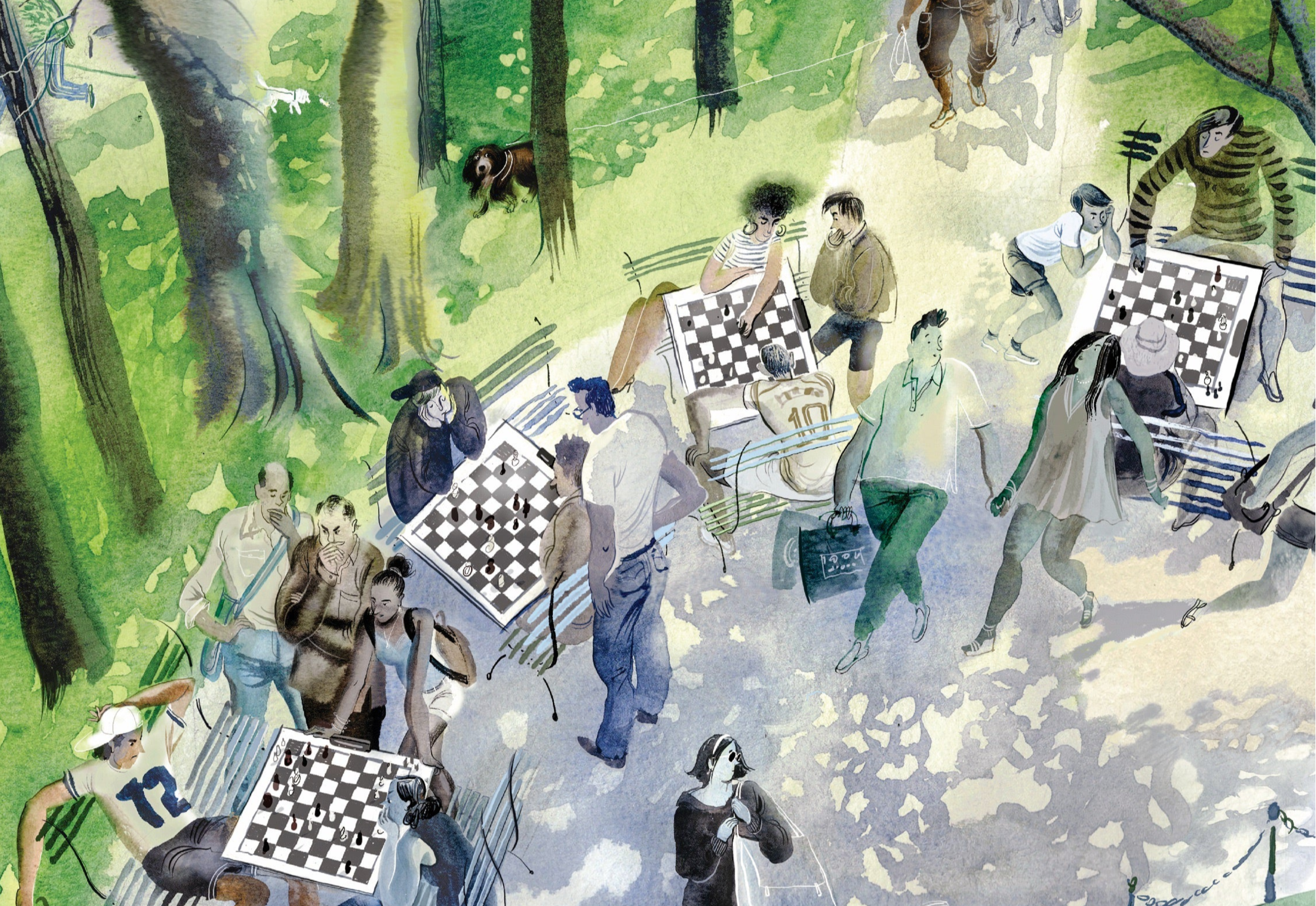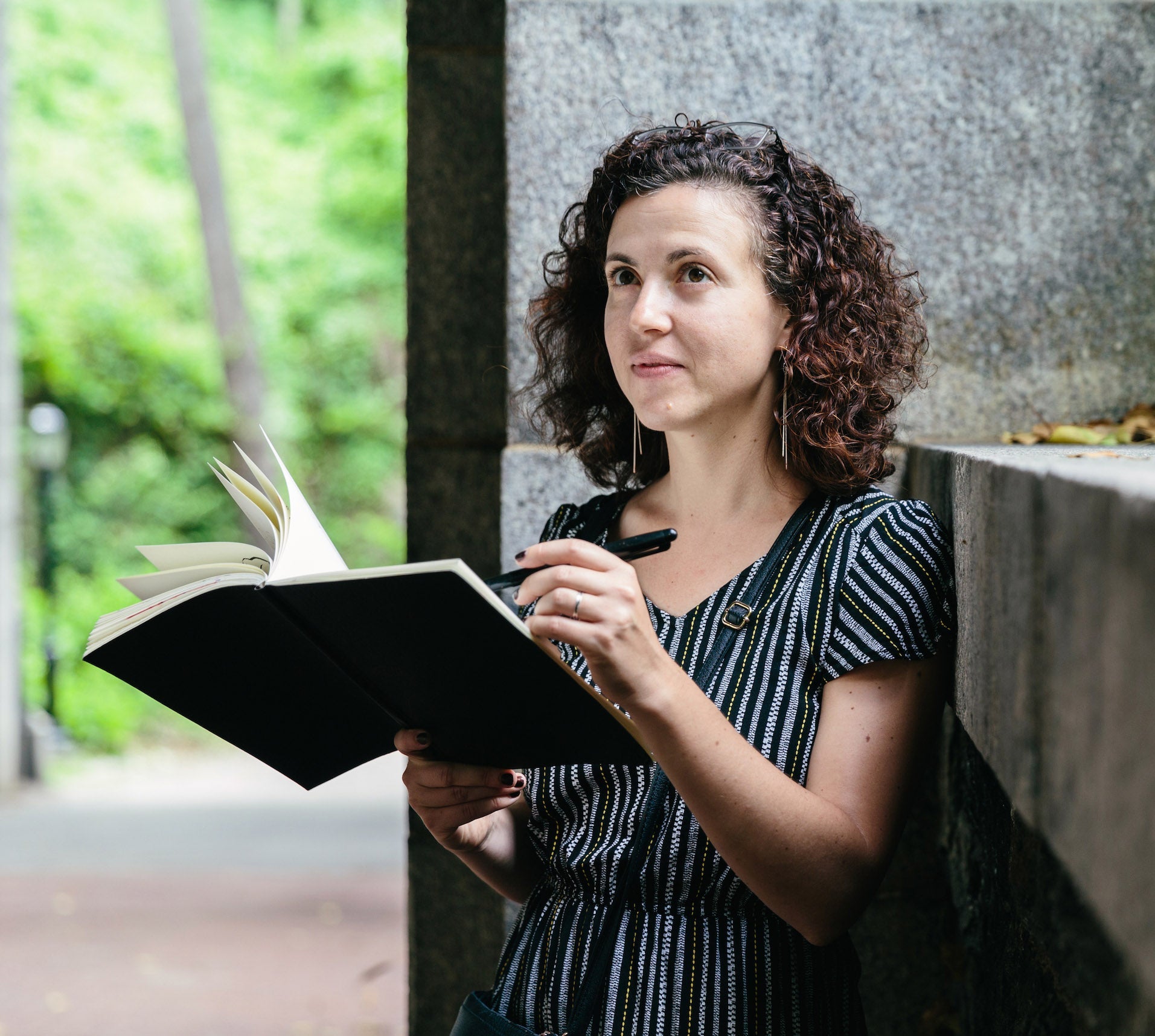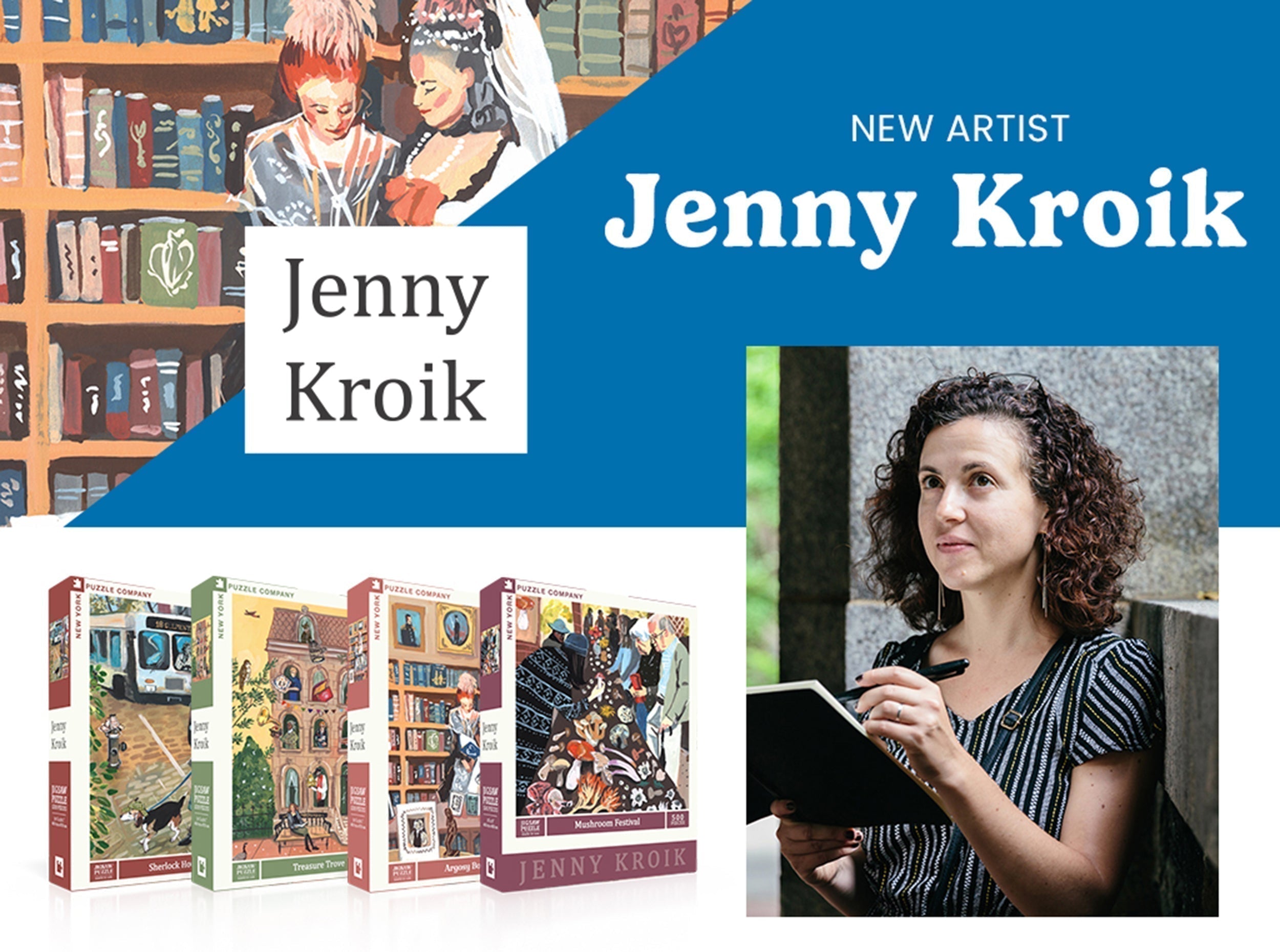
We sat down for a Q&A with one of our newest artists, Bill Mayer — the imaginative mind behind some of our most whimsical and detail-packed puzzles, perfect for fans of Dark Academia. His work blends surreal humor with masterful technique, resulting in scenes you’ll want to explore piece by piece.
Bill Mayer Interview
In terms of your work, it seems like there’s always a marriage of the absurd or two things that would otherwise not go together, but when you see it, it all comes together. Can you talk about your process a little bit and where you find inspiration?
I have always been drawn to the odd and strange. We live in an old Victorian house in Decatur, Georgia. It’s filled with an eclectic collection of dead things and artifacts. My wife Lee and I have been collecting from the time we met at art school. There used to be a strange little shop in New York on 31st street between 6th and 7th Avenue; it was a glass eye sales and taxidermy rental store. On one side, cases of eyes staring out at you, and on the other, two-headed cows and animated stuffed kittens playing instruments..… We’ve always been drawn to that carnival freak show atmosphere.
I’ve loved that line between humor and horror from an early age. It’s an irony that has flowed through my work over the years. Humor was always present, and even in the ‘Strange Dreams’ series of gouache paintings, it’s present under the surface, and after some personal tragedy in our family, I guess the dark stuff just came to the top a bit.
Beyond animal and artistic inspiration, are there any comedic influences in your work outside of the visual arts?
I’ve always been drawn to that kind of semi-violent humor that The Three Stooges had, Monty Python, Mel Brooks, and National Lampoon’s. Crazy antics of Saturday morning cartoons. Lately, a lot of my humorous favorites like “The Onion” have been muffled by the antics of real-life politics. My source for real news has become Late Night television.
I think it’s also the perception that the more realistic style gives, rather than the subject matter. It’s really my same sick sense of humor I have always had; like, ‘taking a cheese-grater to the butt as a way to lose weight’ humor. Drawn in a sketchbook with simple lines, it’s funny. Painted realistically… A little creepy.
What is your preferred medium? Can you take us through a piece from sketchbook to finish product?
I think I'm constantly trying to explore, experiment, and come up with different directions and ideas. I try to play with the medium, sometimes disregarding the traditional ways that it's typically handled. Sometimes some of the most rewarding accidents come from this. Lately, I've been working a lot in gouache; it's sort of become my medium of choice for the time being. It's a challenging medium that has taken some time to work with and perfect. My work has sort of gone through “eras,” from pencil drawings and colored dyes in the 80s, airbrush in the 90s, some experiments with digital tools in the 00s, and lately in more “fine art”-inspired gouache paintings.
Everything starts off with thumbnails. Small layouts to help visually organize elements and compositions. Occasionally, color suggestions if they're important to a concept. The pieces that I am happiest with tend to have the least amount of meddling and art direction. For me personally, a great illustration comes from an uninterrupted creative process that allows you to move fluidly from idea to sketch to final.
Can you give a little background on your artistic skills and training?
I have been drawing for as long as I can remember. My elementary school teachers would often opine in my report cards that all I wanted to do was draw.
I went to Ringling College in Sarasota, Florida, when I was seventeen, where I met my wife, Lee, who is also an artist. Ringling gave me a really strong foundation in drawing and painting. Although at the time I hated school, and in the first year I freelanced a lot of my work to other students. In the second and third year, I started doing my own work more. I think the one true thing art schools teach you is how to see. I think you certainly are also exposed to a world of art you never knew existed. We had access to the Ringling Museum as well, one of the best collections of Rococo and Baroque art this side of Italy.
We graduated three years later and moved back up to Atlanta, where I got a job at a studio, Graphics Group. I worked at a couple of studios for about four years before going out on my own. It was a pretty easy transition. That was about 1976, and I’ve been staying busy ever since. My first published piece would have been a drawing of a bicycle for a promotional piece for the studio. A very small spot, but I do remember how great it felt to see it in print.
Are there particular animals that lend themselves better to your work? Is any animal off limits?
I certainly seem to come back to certain animals and subjects; there are quite a few “Crow” paintings, for example. Crows and Ravens have such a great dichotomy of being beautiful but also dark and scary, a bit foreboding, a bit mystical. They certainly lend well to the concept of blending disparate elements together. No animal is off limits, but I certainly think that while everyone wants dog and cat portraits, I’ve never really found them all that exciting or interesting to paint. I’d much rather find a bizarre monkey from the coast of Indonesia than a housecat.
Can you talk about “Duck Judges” which is perhaps your most famous piece? How did that project come together with Last Week Tonight and the U.S. Fish and Wildlife Reserve?
This piece was commissioned by Last Week Tonight, who were doing an episode on the Federal Duck Stamp Contest. (For those that may not know, duck stamps are conservation revenue stamps that you must purchase to hunt ducks in the United States.) The art directors and writers actually came up with the idea of the duck judges, and while I had a couple of different ideas that I thought worked better, it proved challenging to change their minds from their original concept.
There were several pieces commissioned from different artists, which were entered into the contest and then auctioned off. My illustration earned $25,000 at auction! And the proceeds from the auction were all donated to the U.S. Fish and Wildlife Service.
I don’t know if I’d call it my most famous piece, but it definitely got a lot of attention! The characters that consistently get a lot of fan mail and attention are the “Jazz Cat” Illustrations from the album covers of the smooth jazz band, The Rippingtons, as well as the original illustrations of baseball players from Big League Chew.
Are you a fan of jigsaw puzzles? Any childhood puzzle memories?
We've always enjoyed working on puzzles. Our friend group in art school would send wacky stuff through the mail. It was always a challenge to see what you could get through the mail… a coconut with a stamp, a giant plastic fish… stretched canvas with address and stamps on the stretchers.
One time in art school, someone had sent us an op art puzzle that they had written poetry on the back of, and the op art was so difficult that we turned it over and pieced it together by the letter on the back. I’ve continued to send my wife, Lee, correspondence that was all cut up, where she has to put it together to read the letter. When we are at the cottage, we love putting out puzzles and letting it be a group project where everyone sort of works on it together throughout the week.
Have you had a chance to work on any of your puzzles yet?
We are waiting to take them up to our family cottage to really dive in… I’ve had a lot of people sending me their puzzles in process, along with whatever cocktails it takes to get through it. Very fun to see and I’m glad people are enjoying them so much! We recently did a few of the minis and even got the grandson off his phone for thirty minutes!
Outside of art (and hopefully puzzling), what are your other hobbies and interests? Are they purely for pleasure, or do they inform your work in any way?
We have been climbing both outdoors and in gyms for the past thirty years or so. I also hike up Stone Mountain several times a week. It ends up being a great escape from being holed up in the studio. We try our best to get outdoors as much as possible. At our cottage, we do a lot of sailing, canoeing, biking, etc.
What’s on the artistic horizon for you this year? Is there more art in your portfolio that you’d like to see make its way to the world of jigsaw puzzles?
I think my first great-granddaughter has sort of softened the dark edge of my humor and subject matter, has made me think a lot more about doing children's books (which I’ve done quite a few of in the past), and flowers. Celebrating life and creativity. Maybe a little less cynical.
I think the creepier and weirder creatures are definitely good candidates for puzzles, but I’m not sure you want those scary, dead eyes staring at you for hours as you work through it!
You can follow Bill Mayer on Instagram, or see more of his work on his website.

